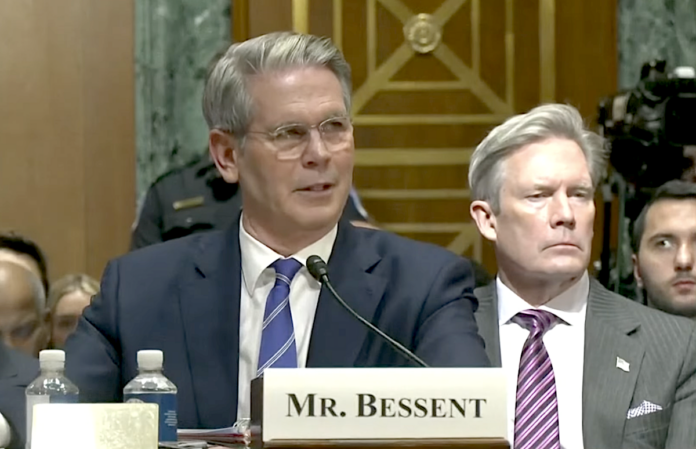
(States Newsroom) — The United States and China agreed Monday to lower steep tit-for-tat tariffs for 90 days, temporarily cooling a trade war but still leaving a cloud of uncertainty over businesses in the world’s two largest economies.
American and Chinese officials announced the pause will go into effect Wednesday, following talks in Geneva, Switzerland, as negotiations on a final deal continue. U.S. markets rallied following the announcement.
U.S. tariffs on Chinese goods will drop to a universal 10% baseline, down from the 145% President Donald Trump imposed last month. Trump’s previous 20% emergency tariffs announced in February on all products because of illicit fentanyl chemicals from China will remain in place, as will protective tariffs on goods still in place from the president’s first term. New duties on small packages sent to the U.S. from China, valued at less than $800, will also remain.
Fentanyl discussion
Treasury Secretary Scott Bessent said Monday that he and Chinese counterparts “had a very robust and highly detailed discussion” on preventing fentanyl and the chemicals to make the synthetic opioid from entering the U.S.
“The upside surprise for me from this weekend was the level of Chinese engagement on the fentanyl crisis in the United States. They brought the deputy minister for public safety,” Bessent said.
Bessent told reporters that overall negotiations were “always respectful.”
“We had the two largest economies in the world. We were firm — and we moved forward … We came with a list of problems that we were trying to solve and I think we did a good job on that,” Bessent said.
The White House touted the 90-day pause as a “landmark deal” in a Monday press release.
China has agreed to lower its tariffs on U.S. goods to 10%, down from 125%, according to a joint statement.
Tariffs are taxes on goods coming across the border. Companies and small businesses that import items from China must pay them to the U.S. government to receive their purchases.
Business reaction unclear
“I see the president’s approach to this as him putting a knife in your back and then pulling it out an inch and calling it a win,” said Alex Duarte, senior economist at the Tax Foundation, a think tank that advocates for lower taxation.
“Depending on the good, the rate could be close to 55%, so the tariffs on China are still pretty high. It’s hard to say how businesses are supposed to react to this because there’s so much uncertainty and the president behaves very erratically,” Duarte told States Newsroom Monday.
States Newsroom spoke to several business owners who were extremely nervous ahead of Trump’s April 2 “liberation day” tariffs. That announcement sent markets plummeting.
Marcus Noland, executive vice president and director of studies at the Peterson Institute for International Economics, said in an interview Monday the situation has “gone from OK to apocalyptic to bad.”
“It’s clearly preferable to a tariff that would have essentially ended trade between the two countries, but it’s still significantly more restrictive than where we started the year,” Noland said.
The White House released a statement Monday saying the administration will continue “working toward a rebalancing” of a trade deficit with China. In 2024, the U.S. purchased $295.4 billion more in goods from China than China purchased from the U.S.
“Today’s agreement works toward addressing these imbalances to deliver real, lasting benefits to American workers, farmers, and businesses,” according to the White House press release.







